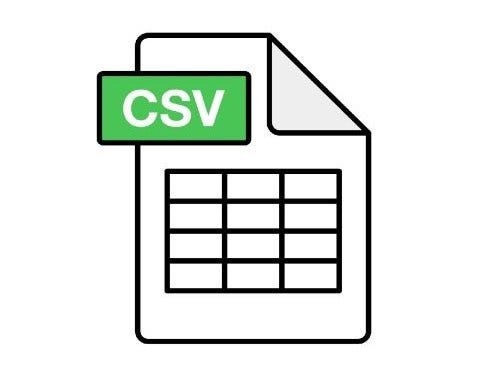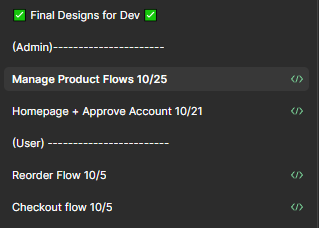
PROJECT OVERVIEW
ROLE:
Product Designer
TEAM OF 3:
Tech Lead, Software Engineer, Product Designer
WHAT I DID:
Wireframes, Prototypes, Testing
OUTCOME:
A functional order management system
Background
Ultra Pain Products (UPP) is medical company that provides opioid free pain management devices through B2B sales to other medical companies. Ultra Pain was using a combination of phone calls, emails, and paper forms in order to manage their orders. They also were primarily using QuickBooks in order to keep track of orders and inventory. UPP needed a better system for customers looking to place order and a better way to manage orders that came in.
What’s Going On??
The Current State of Things:
Looking at how things were currently handled, it seemed that managing orders was a nightmare for both UPP and the businesses it was working with. Overall, it seemed very inefficient and tedious.
Brainstorming Solutions
UPP wanted:
An order system that would be integrated with Quickbooks, making real time changes to inventory as products were bought
A system that would be as automated as possible, lessening the amount of manual interaction from the team to maintain
Our First Major Challenge
The tech lead and found that Quickbooks Desktop is an older software that lacked update API documentation. Making it difficult to implement in the product that we would be building.
We brainstormed a few solutions…
Solution 1: Conductor
Conductor was a resource we found that that would securely connect our app to Quickbooks and allow our dev team to connect the two platforms with ease.
Pros:
We wouldn’t have to worry about difficulty in implementing the two apps
Speeding up dev time
Cons:
This service is paid - adds to the monthly maintenance costs of product
Reliance on another third party service - risk app being compromised if Conductor ever stops exisiting
Solution 2: Moving to Quickbooks Online
Another option was to potentially move the companies resources to Quickbooks Online, the modern and updated version that only existed in the cloud.
Pros:
Has more support and is modernized
API documentation is up-to-date making it easier to implement for devs
Cons:
Switching platforms is strenuous on the company
Quickbooks Online is a subscription only model, compared to Quickbooks Desktop, which is pay to own
Solution 3: A CSV Import Feature
A third option I came up with was making a CSV feature in out app. Where we can create a CSV file for Quickbooks so to remove the need to have to manually update Quickbooks Desktop
Pros:
No need for any third party extras
Reduces manual labor and saves costs
Cons:
Developer was a little unsure about the viability of this option and whether or not it would be something we could get to work properly
What We Decided
After meeting with the stakeholders, they decided to omit the Quickbooks integration altogether after not being able to find an option they liked. They decided that they would manage the Quickbooks independently of the app. Since Quickbooks wouldn’t be integrated with the app, we also decided that we would need to manually approve orders after having someone on the admin side reference the Quickbooks and manually approve orders. Our final feature list that we agreed to build was:
Let’s Start Building
Project Structure and Workflow
We decided to use the Kanban framework and set up a Confluence board to track all our features. Developers decided to use Supabase for the database and Tailwind CSS framework
Drafting in Figma
Admin - Manage Products
User - Checkout
Admin - Manage Users
Design Crit Sessions
Throughout my drafting process I would be sure to constantly check in with my tech lead and developer to make sure that we were all on the same page about the designs. We also used Discord to quickly communicate ideas, concerns, and obstacles that the team was facing.
Cleaning Up and Delivering
Handoff
I used dev mode on Figma to handoff final designs. I also made sure to provide proper annotations and explanation for interactions. I also tried to keep layers organized and named for easier development.
Feedback and Iterations
Before fully delivering, I wanted to get feedback on the current state of the product. I hosted moderated Zoom meeting to test usability and spot potential areas for improvement.
Some Potential Pain Points
1) Inability to Approve Orders from the order details page
This could make the flow a little clunky because after adding shipping and tax, the admin has to return to the previous page for approval
2) Users can only change order status from the manage order page
Users should be able to view order details and change order status from the details page
3) Strange Mobile Touchpoint Behaviors
There were certain dead points on the mobile version where the touchscreen wasn’t responsive for certain cards. This was our most urgent item.
Final Call Presentation
We conducted a final call with UPP after our iterations to address any final questions and concerns. The team also needed to address how the assets and code would be handed off to another team as the product matured and passed through different hands.
Did We Reach Our Goal?
Still More to Do
Our goal was ultimately to:
1) Provide an improved experience to UPP customers when purchasing products YES
2) Reduce administrative workload and simplify order/inventory management for UPP NO
While we ultimately provided the customer with an improved experience, the lack of seamless integration means that there is an added layer of complexity for UPP. Also, payments still are not accepted through the portal, which adds to labor for UPP. I think that to simplify the workflow for UPP they should explore the option of completely switching over from Quickbooks and adding a payment feature to the app if this app is truly a long term investment to the company.





















